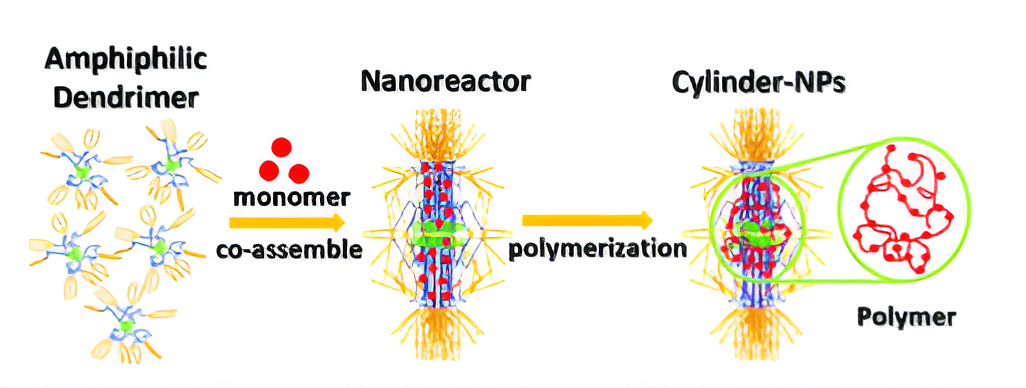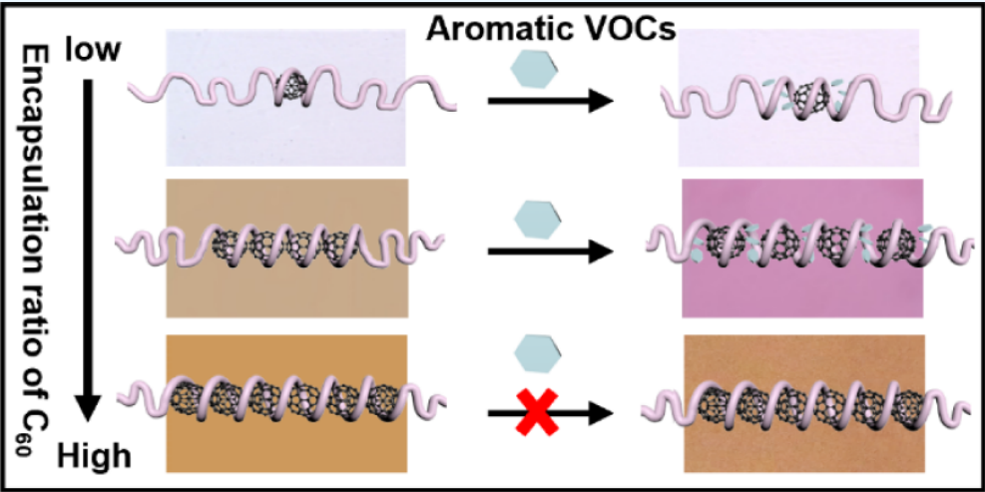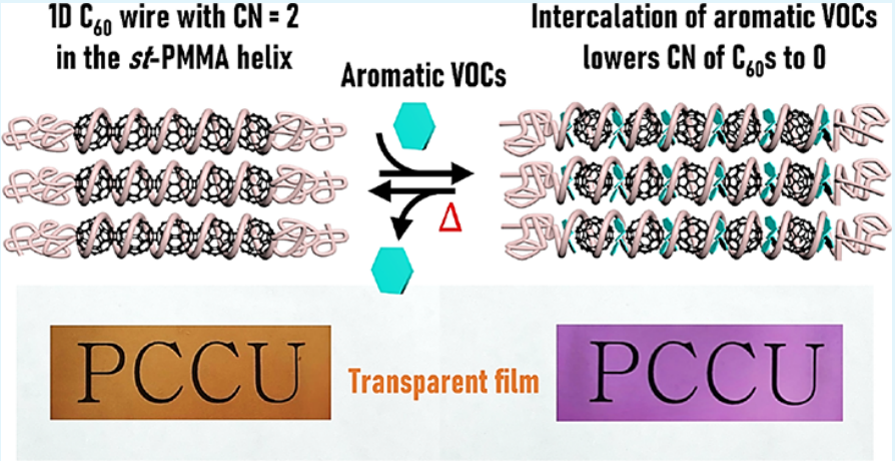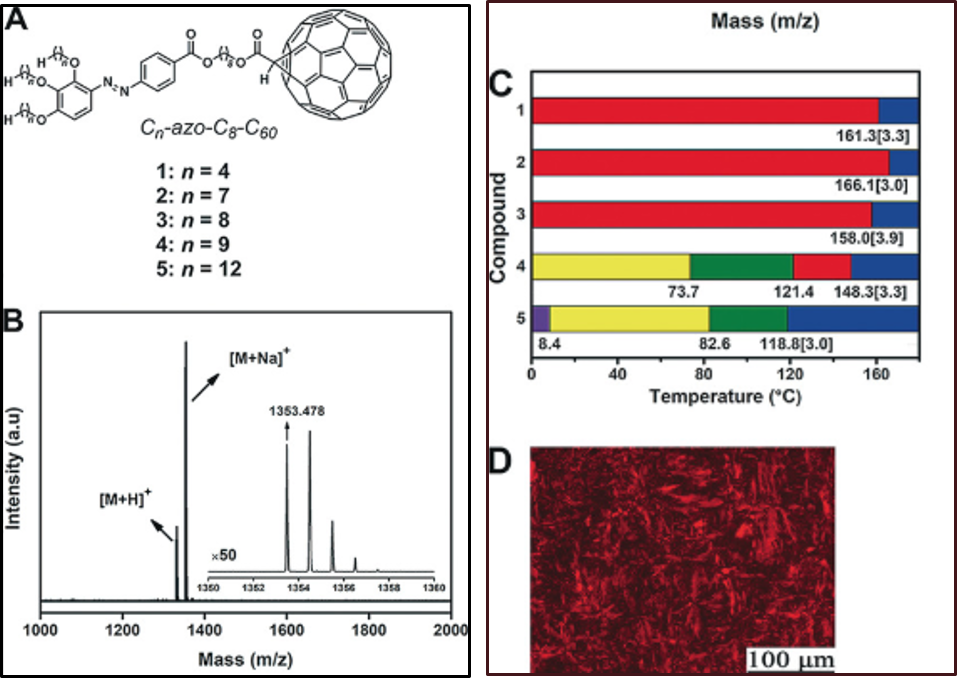Optimal st-PMMA/C60 helical inclusion complexes via tunable energy landscapes for the application of an Ag SERS-active substrate
Wen-Tsung Tseng, Pei-Yuan Yen, Yu-Hao Wang, Wei-You Huang, Wei-Tsung Chuang, and Kuan-Yi Wu*

ABSTRACT
In bio-inspired systems, the hierarchical structures of biomolecules are mimicked to impart desired functions to self-assembled materials. However, these hierarchical architectures are based on multicomponent systems, which require not only a well defined primary structure of functional molecules but also the programming of self-assembly pathways. In this study, we investigate pathway complexity in the energy landscape of the syndiotactic poly(methyl methacrylate) (st-PMMA)/C60/toluene complex system, where C60 and toluene serve as guests in the st-PMMA helical host. Structural characterization revealed that st-PMMA preferentially wraps around C60, forming a thermodynamically favorable helical inclusion complex (HIC). However, during the preparation of the st-PMMA/C60 HIC, a lengthy guest-exchange pathway was discovered, where the st-PMMA/toluene HIC transformed into the st-PMMA/C60 HIC. This pathway complexity may hinder the formation of the st-PMMA/C60 HIC within a feasible timeframe. Given that the energy landscape can be modulated by temperature, the st-PMMA host can directly wrap around C60 in higher temperature ranges, thereby bypassing the guest-exchange process and increasing the st-PMMA/C60 HIC formation efficiency. Additionally, after self-assembly programming, the st-PMMA/C60 HIC can serve as an excellent photochemical reduction site. The well dispersed nanodomains of the st-PMMA/C60 HICs act as nanoparticle templates for surface-enhanced Raman scattering (SERS) hotspot fabrication. We successfully utilized these HIC templates to synthesize self-assembled SERS-active silver nanoparticle arrays, demonstrating their potential for use in chemical sensing applications. In summary, a clear energy landscape can guide supramolecular engineering to achieve the desired supramolecular architectures by selecting appropriate self-assembly pathways.
KEYWORDS: supramolecular chemistry, inclusion complexes, helical polymers, C60, Raman spectroscopy.





